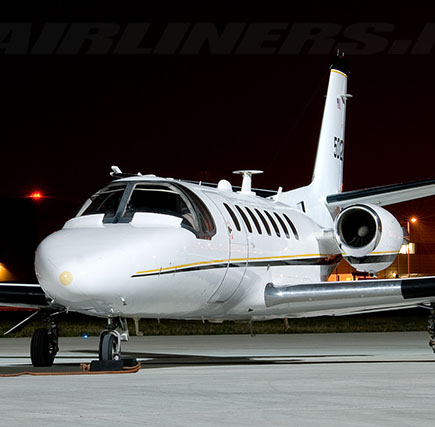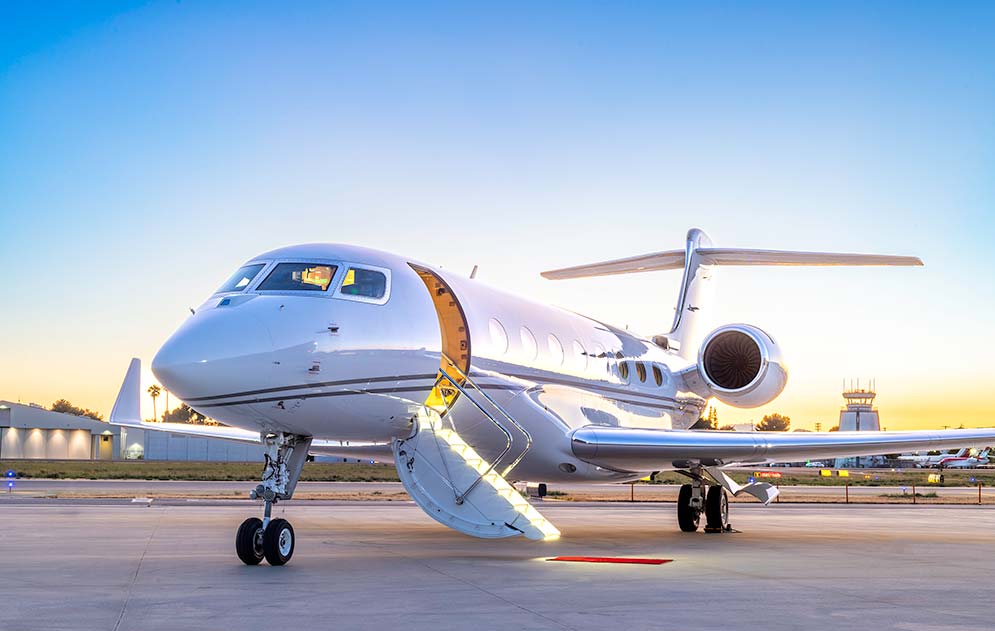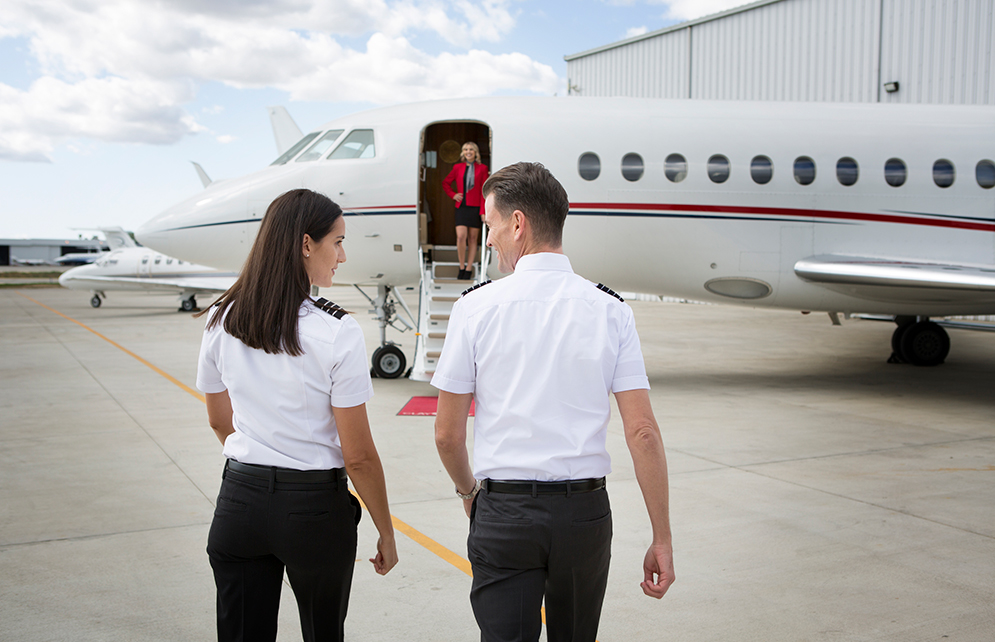
Citation Excel
By Clay Lacy In Professional Pilot’s December 1998 “Flight Check”
ATP/CFII/Helo/Sea.
Gulfstream II/III/IV, Learjet series,
HS125, Boeing 747 and
25 misc. type ratings.
The Citation Excel was designed as follow-on aircraft to the popular Citation V Ultra. It’s probably been the most successful new bizjet offering ever with more than 200 firm orders at this very early stage of the program. Our flight test pilot, Clay Lacy, made his way to Wichita KS to evaluate the Excel’s unique blend of light jet and big-cabin attributes.
I’ve always admired Citations for their great handling characteristics, their ease of operation and for their superb market success over the years. With eight models of Citations now being offered, Cessna certainly covers the market well with everything from the entry-level CitationJet to the transcontinental Mach .92 Citation X. They’ve been able to bring out so many different models by taking the fuselage from one aircraft and the wing from another to come up with new aircraft variants without having to reinvent a whole new airplane every time. The Excel is an intriguing new offering and I was looking forward to flying it.
I arrived at Cessna’s impressive new delivery center in Wichita to meet with Mgr of Product Marketing Michael Pierce, Chief Pilot of Flight Operations Jeff Brollier and Dir of Corporate Communications Jan McIntire. Pierce had prepared an excellent presentation, with a full range of charts and specifications and we sat down to discuss the airplane.
Cessna more or less arrived at the configuration of the Excel by listening to what customers wanted and using the Citation V Ultra as a baseline. The trend throughout the industry these days is definitely toward bigger cabins and, in creating the Excel, Cessna combined a shortened Citation X fuselage with a stretched Citation V Ultra wing. The Excel, at $7.6 million (1998 standard equipped), offers exactly the same cabin width and almost- stand-up cabin height as the Citation X yet it retains essentially the same performance, short-field capabilities and operating economics of the Ultra. While the Excel is more expensive than the $6.3 million (1998 standard equipped) Ultra, it’s priced about half that of the $17 million (1998 standard equipped) Citation X while offering similar cabin comfort.
Introduced at the 1994 NBAA show, the first Excel was delivered on July 2, 1998 and a total of 17 deliveries are scheduled for this year. Cessna plans to build 40 Excels next year and will ultimately increase production to 60 aircraft a year. First available delivery position is currently in 3Q01.
PREFLIGHT
Brollier and I walked out to s/n 002 Excel, which was our flight test aircraft. Unlike the Citation V Ultra, the nose compartment of the Excel houses remote avionics, JET batteries, oxygen and brake systems instead of baggage. I noted the clean wing leading edges heated by bleed air and the trailing-edge fowler flaps in two sections on each side. Brollier pointed out the single-point refueling port that provides a quick eight-min refuel capability.
Access to the tail compartment was straightforward and there’s enough working room to make inspection and maintenance procedures easy. Standard equipment within the tailcone includes an air-cycle machine and a vapor-cycle cooling system. A factory option is also available to replace the vapor-cycle system with an AlliedSignal RE100XL APU for an additional $194,500. Our flight test aircraft had an externally serviceable lav, which is another customer option.
The engine nacelles had eye- level oil sight gauges, which is a nice feature. Also, the 83-cu-ft external baggage compartment seemed very spacious with integral steps in the access door.
As we came around forward, Brollier noted the triple seals on the entry door. I’m not sure I’ve ever seen this before but it’s a great feature. There are two pressure seals— one that can hold full cabin pressure and an acoustical seal to keep the cabin quiet.
This particular aircraft had a two-place divan across from the entryway, six comfortable seats, an enclosed lav with sink and a well- planned refreshment center with fine cabinetry work. All Citation completions are being done inhouse by Cessna and they’ll complete about 200 various Citation models this year alone.
I got into the left seat while Brollier got into the right and I immediately felt at home in the Excel’s flightdeck. Everything is laid out very similar to earlier Citations and I’ve always felt that Citations have wonderful cockpits.
The Excel’s panel features a Honeywell Primus 1000 flight control system with two 8-by-7-inch primary flight displays and a centrally located 8-by-7-inch multifunction display. A single Universal Avionics UNS-1Csp FMS comes standard but customers have the option of ordering a wider pedestal with double UNS-1Csp.
Additional features found in the Excel’s cockpit include an annunciator panel and glass rather than Plexiglas windows. The only thing I didn’t like about the flightdeck is that you’ve got a window post right beside your head. It’s there for structural support and to enable an opening window but I found it to be an obstruction of vision. However, you can get around this problem by simply moving your head over a bit. Many other aircraft have similar posts as well.
The engine start procedure was straightforward and steering is typical of Citations in that you steer with the rudder pedals and to make a tighter turn, you add brake. Trailing-link landing gear has been fitted to the Excel so you’re assured of smoother taxi and landings over the Ultra’s straight gear configuration.
FLYING THE EXCEL
At ICT (Wichita KS), we taxied for takeoff to Rwy 1R at a weight of 17,000 lbs (85% of the 20,000-lb MTOW). At our weight, V1 was 102 kts, VR was 106 kts and V2 was 118 kts. The Excel climbed very nicely and Brollier pointed out that the MTOW rate of climb is 3790 fpm at sea level.
With a couple of one-min level-offs, we were climbing through FL390 20 min into the flight at a rate of 1500 fpm. Leveling off at FL410 22 min into our flight, I established a Mach .73 cruise and noted an indicated fuel burn of 1350 pph, which was just under the book figure of 1355 pph. Brollier told me that the Excel will fly its full advertised range of 2080 nm with a 45-min reserve at Mach .70 and a fuel burn of 1050 pph. Additionally, you can push the Excel’s range to 2160 nm, including a 45-min reserve, at a Mach .64 long-range cruise with fuel burn down at 800 pph.
Before flying over Liberal KS, we received clearance to do some steep turns. In a 60° bank, I experienced absolutely no buffet, stall or stick shake. To get into aerodynamic buffet I had to lower the nose and pull the stick back in a 60° bank during an accelerated stall. When stall did occur, it was rather sudden with the drop of the right wing drop but as soon as I released back pressure we were immediately out of the stall.
About 80 nm out of Wichita, I performed an emergency descent, bringing power to idle and deploy- ing the two-position speed brakes. The airplane came down quickly with an indicated descent rate in excess of 10,000 fpm as I held MMO of Mach .75.
With our IFR clearance canceled below 18,000 ft, I leveled out at 15,500 ft to do a few more stalls. At this altitude, a clean stall occurred at 95 kts and 84 kts with flaps and gear down. Here again, after going through shaker to the aerodynamic stall, it was a rather quick break with a right wing drop off but the minute I released back pressure, we recovered. Brollier suggested I enter a gear down and full flap stall and fly out of it by adding power, which worked out well.
Entering the pattern to Rwy 1R at ICT, I shot a VFR approach to a full stop with a taxi back for take- off. Our next circuit was a touch-and-go and Brollier pulled an engine at V1 and the airplane climbed out at 1200 fpm. In the single-engine condition, I flew the pattern and performed an approach to touch down. On the next takeoff Brollier again cut an engine and I found the Excel easy to trim and control in the simulated engine-out condition.
On our final approach we came around to Rwy 1R at an approach speed of 112 kts and 106 kts over the fence. The reversers, which are designed to be brought back to idle at 60 kts, worked very well. Taxiing back to Cessna’s delivery center, I again noticed the good ground handling characteristics, which is typical of a Citation.
I’ve always found Citations to be clear-cut airplanes to fly with lots of stability and I was equally impressed with the Excel’s flight characteristics. Whether you’re used to flying Citations or not, the Excel will be a very easy airplane to transition to.
The Excel has not yet been approved for single-pilot operation and it currently requires a separate type rating. But if you’ve got a Citation rating and current P-1000 EFIS experience, you can manage with just a five-day differences training course rather than the full two-week type rating course.
The payload with full fuel is an adequate 910 lbs and the Excel’s Mach .75 high-speed cruise is attractive for stages up to 1600nm. To achieve the full advertised VFR range of 2080 nm, however, you’ve got to cut cruise speed to a high-speed cruise of Mach .70.
AIRCRAFT SYSTEMS
The Excel’s wing is 3.5 ft longer that the Ultra’s with 13 inches additional inboard span on each side and wingtip extensions. The empennage has a two-position stabilizer for takeoff and landing minus a 2° angle of incidence for takeoff and landing and plus 1° in cruise. When you’re flying below 215 kts with the flaps extended, the trim will move automatically from one position to the other.
Flight controls are typical of a Citation—unboosted bell cranks and push rods. The fuel system is straightforward and has fuel heaters so you don’t need prist. Hydraulics operate at 1500 psi on demand and power the thrust reversers, landing gear, speed brakes, flaps and the two-position horizontal stabilizer. The brakes have an independent hydraulic system powered by an electric motor. Emergency gear extension is accomplished by gravity and a nitrogen blow-down system.
The Excel’s Pratt & Whitney PW545As each have a takeoff thrust rating of 3804 lbs. A hydromechanical fuel controller acts like a FADEC with an electronic unit to adjust best takeoff power setting, climb and max cruise with three detents in the throttle quadrant.
A DC electrical airplane, two engine-driven 28-volt DC starter- generators provide power and there are alternators for the electrically heated windshields and side windows. Two JET batteries supply emergency backup power for essential systems. A single air-cycle machine provides dual-zone temperature control and, if you don’t opt for the AlliedSignal APU option, there’s a vapor-cycle system for cooling on the ground.
Bleed air anti-ice is supplied to the leading edges, engine inlets and fan spinners. The horizontal stabilizer is fitted with deice boots, which cycle automatically when activated. Flightdeck windows are anti-iced and defogged electrically and there’s an electric blower located in the nose to clear the windshield of rain and snow.
Phased maintenance inspections are every 300 hours with full-phase inspections every two years. The Excel features several improvements designed to ease maintainability. One such refinement is that you can inspect control cables without disassembling the interior. TBOs on the PW545As are 5000 hours with a mid-life at 2500 hours. The Excel comes with a five-year warranty on the air- frame and associated components, five years or 2500 hours on the engines and five years on the Honeywell avionics suite.
IMPRESSIONS
Cessna came up with a winner in the Excel. Corporate operators and fractional ownership programs are looking for larger, comfortable cabins and the Excel provides an impressive cabin for a light jet.
It does surprise me, however, that so many manufacturers are building airplanes with seemingly transcontinental cabins yet they won’t go nonstop across the country. It appears to me that when a company builds a bigger airplane, it should really go farther. Pierce pointed out, and he has a good point, that most Excel buyers are not located on either the West or East Coast and that more people are looking for affordable aircraft with big cabins than range. If you live between Phoenix and Atlanta, the Excel will take you pretty well anywhere in the country nonstop with a roomy cabin to boot.
If any manufacturer understands buyer trends in business jets, it’s Cessna and the company has developed a product lineup unmatched in the light to midsize jet categories. The Excel is truly a breakthrough product in the light-jet, big-cabin arena anyway you look at it. Anyone considering an entry-level midsize jet should definitely consider purchasing the Citation Excel.


